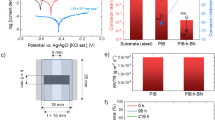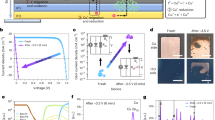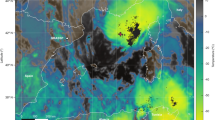Abstract
USING rocket spectroscopy, Hinteregger et al.1 obtained interesting new solar lines, the majority of which could not be classified up to now. Among these lines, two strong lines at 171.1 Å and at 148.5 Å have been seen. We have been able, using the technique of differentiation between different degrees of ionization2,3, to classify these two lines as the 3p6 1S0 – 3p53d 1P1 transition of Fe IX and Ni XI. This line was found to be very prominent in the isoelectronic sequence of A I (Table 1). The foregoing classification is based on the assumption of LS coupling.
This is a preview of subscription content, access via your institution
Access options
Subscribe to this journal
Receive 51 print issues and online access
$199.00 per year
only $3.90 per issue
Buy this article
- Purchase on SpringerLink
- Instant access to full article PDF
Prices may be subject to local taxes which are calculated during checkout
Similar content being viewed by others
References
Hinteregger, H. E., Hall, L. A., and Schweizer, W., Astrophys. J., 140, 319 (1964).
Fraenkel, B. S., J. App. Phys., 33, 2141 (1962).
Alexander, E., Feldman, U., and Fraenkel, B. S., J. Quant. Spect. and Radiative Transfer, 4, 501 (1964).
Author information
Authors and Affiliations
Rights and permissions
About this article
Cite this article
ALEXANDER, E., FELDMAN, U., FRAENKEL, B. et al. 3p6–3p53d Transitions of Fe IX and Ni XI in the Solar Spectrum. Nature 206, 176 (1965). https://doi.org/10.1038/206176a0
Issue date:
DOI: https://doi.org/10.1038/206176a0



